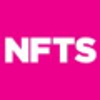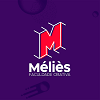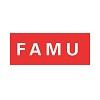Vancouver Film School (VFS) launched a Classical Animation program and North America’s first Multimedia program in 1994. Just a year later, the school launched a one-year 3D Animation and Visual Effects (VFX) program. In 2013, Vancouver Film School opened a new Animation Campus outfitted with an animation rig from Long Winter Studios, and Qube! render farm.
Today, VFS is a Houdini Certified School that provides 24/7 access to expanded state-of-the-art computer labs equipped with industry standard software, studios, theaters, film sets, motion and performance capture facilities (among the largest in North America), production spaces, and screening rooms. VFS facilities are housed across eight campuses and more than 42,000 sq. ft. of space.
Other VFS features include numerous partnerships with major technology companies and software developers such as HP, Unreal Engine, Pixologic (makers of Zbrush), Dell Technologies, Autodesk, Unity, NVIDIA, Final Draft, and Adobe; visiting artists; internship opportunities with both independent and major studios; workshops, training sessions, and industry social events hosted by VFS; and access to career services through the VFS Alumni Directory & Job Board.
The Classical Animation program at Vancouver Film School is 12-month diploma program that explores the basics of animation, rendering, background design, animating characters, layout, storyboards, and art direction. Course examples for the program include Animation 1-4; Character Design 1-2; Effects Animation 1-2; Digital Ink and Paint; History of Animation; Composition; 2D Digital Animation; Storyboarding 1-2; and Premiere.
Classical Animation students may also take a number of non-credit courses to enhance the program. Examples include Maya Intro; Photoshop; and Art Direction. The program culminates with the completion of the students demo reel and professional animation portfolio.
The 3D Animation & VFX program at Vancouver Film School is a 12-month diploma program that allows students to focus in Animation, Modeling, or Visual Effects. All students will learn the basics of the 3D pipeline; storytelling through the Pre-visualization course; and lighting, rendering, and compositing techniques. Course examples for the program include History of Animation + VFX; Animation 1-3; Advanced Animation; Visual Effects 1-3; Creative Development; Visual Effects: Data Acquisition; Advanced Modeling; Surfacing; Digital Sculpting 1-2; Design; Previsualization; and Life Drawing.
In the fourth term of the VFS 3D Animation & VFX program, students will enter the studio component of the curriculum, which focuses on the production of a demo reel in collaboration with industry mentors.
Regular group reviews and one-on-one feedback take place during the fifth term of the program. In the final term, students will put the finishing touches on their projects for the VFS Industry Night event.
In addition to the Classical Animation and 3D Animation & VFX programs, Vancouver Film School has an Animation Conception Art program that explores drawing, worldbuilding, storytelling, drawing, and character design. In the fifth term is this 12-month diploma program, students will begin working on a pitch package and professional portfolio. Graduates are prepared to pursue careers in comic arts, games, animation, film and television, interactive media, and illustration (publishing, advertising, science and medicine, architecture, etc.).
Across all VFS animation programs, graduates have established careers at top studios around the world. Program alumni have worked on more than 100 feature films, 25+ TV/web series, over 20 3D Animation projects, and more than 30 games. Examples include Game of Thrones, Ghostbusters Afterlife, Overwatch, The Grinch, Justice League, Spider-Man No Way Home, Luigi’s Mansion, Halo Infinite, League of Legends, Sonic the Hedgehog, Child’s Play, Free Guy, Toy Story 4, God of War, and Dune.
Vancouver Film School opened in 1987 with 12 Film Production students. Today, the school serves more than 1,000 students enrolled in 15 programs across eight campuses, including Shanghai VFS (SHVFS). Vancouver Film School is accredited by the B.C. Private Training Institutions Branch (PTIB) of the Ministry of Advanced Education, and the British Columbia Education Quality Assurance (EQA). VFS is also holds a Designation Certificate under the Private Training Act.



























